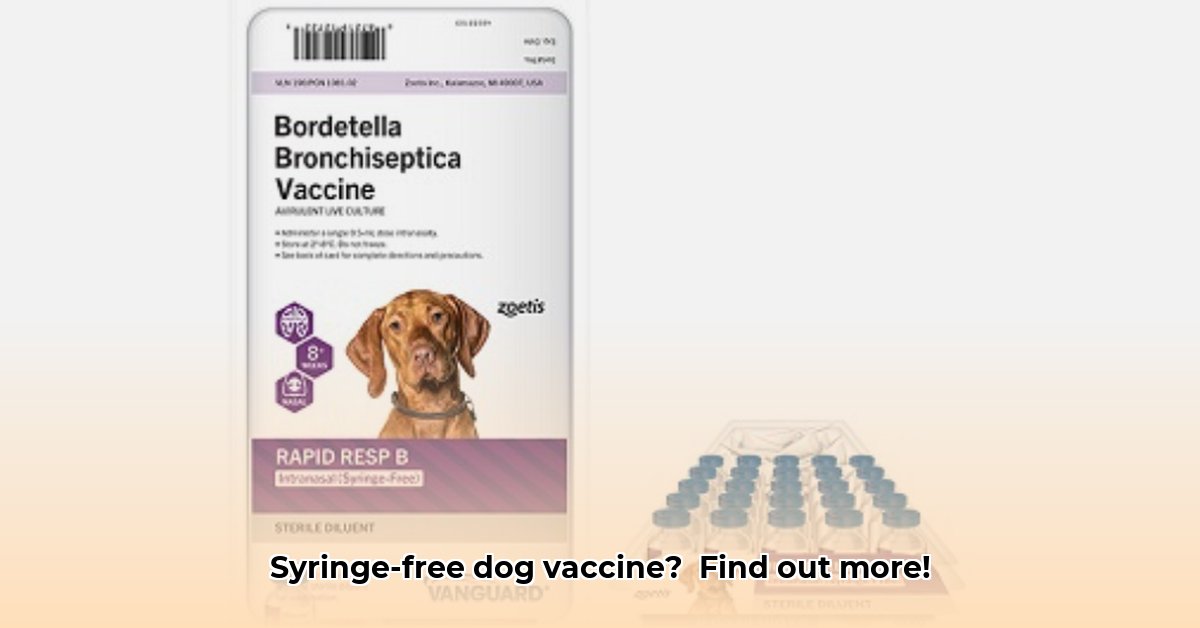
Vanguard Rapid Resp 3: A Comprehensive Overview for Veterinarians and Pet Owners
Vanguard Rapid Resp 3 is a novel intranasal vaccine designed to protect canines from three common respiratory pathogens: canine adenovirus type 2 (CAV-2), canine parainfluenza virus (CPIV), and Bordetella bronchiseptica. Its syringe-free administration offers a less stressful vaccination experience for both pets and owners. This review delves into the vaccine's efficacy, safety, and administration, providing actionable insights for veterinary professionals and informed pet owners.
Vaccine Composition and Mechanism of Action
Vanguard Rapid Resp 3 is a modified-live virus vaccine delivered intranasally. This means it uses weakened versions of the target pathogens to stimulate an immune response. The intranasal route delivers the vaccine directly to the respiratory tract, potentially leading to a stronger, more localized immune response compared to traditional injectable vaccines. (Note: Further research is needed to confirm this hypothesis). The vaccine elicits the production of antibodies against CAV-2, CPIV, and Bordetella bronchiseptica, thus preparing the dog's immune system to combat these infections.
Efficacy and Safety Data: A Balanced Perspective
While Vanguard Rapid Resp 3 is officially approved and demonstrates protection against the targeted pathogens, data limitations exist. Studies show effective protection for at least one year against CAV-2, CPIV, and Bordetella bronchiseptica. However, long-term efficacy data beyond one year is currently lacking, necessitating annual revaccination until comprehensive data is available. This uncertainty highlights the need for ongoing research to determine the optimal revaccination schedule.
Regarding safety, the most significant risk is the potential for rare anaphylactoid reactions (severe allergic reactions). Veterinarians should always have epinephrine readily available for emergency treatment. Proper storage between 2°C and 8°C (36°F and 46°F) is crucial to maintain vaccine potency.
Administration and Storage: Practical Guidelines
The intranasal administration is straightforward, minimizing stress for the animal, but precise adherence to manufacturer instructions is paramount.
- Storage: Maintain the vaccine at 2-8°C (36-46°F) until administration.
- Preparation: Gently shake the vaccine before each use to ensure even distribution of the components.
- Administration: Administer the vaccine as directed on the product label, typically a single dose per nostril.
- Observation: Observe the canine for 15-30 minutes post-vaccination for any unusual reactions.
- Disposal: Dispose of unused vaccine according to local regulations.
Comparison to Other Vaccines: A Knowledge Gap
Direct comparisons with other commercially available canine respiratory vaccines are currently limited due to a lack of head-to-head clinical trials. This necessitates further research to establish a clear understanding of Vanguard Rapid Resp 3′s comparative efficacy and cost-effectiveness. Veterinarians must consider various factors, including regional disease prevalence and individual patient health, when selecting a vaccination protocol.
Actionable Recommendations for Veterinarians and Pet Owners
For Pet Owners:
- Consult your veterinarian to determine if Vanguard Rapid Resp 3 is appropriate for your dog's individual needs and health status.
- Discuss alternative vaccination options and their respective benefits and drawbacks.
- Strictly follow the recommended storage and administration instructions.
- Monitor your dog closely for any adverse reactions after vaccination and report any concerns promptly to your veterinarian.
For Veterinarians:
- Stay updated on the latest research findings regarding Vanguard Rapid Resp 3 and other canine respiratory vaccines.
- Provide detailed and transparent information to clients, clearly outlining both the benefits and limitations of available vaccines.
- Employ rigorous storage and administration protocols to ensure vaccine efficacy and minimize waste.
- Advocate for participation in clinical trials and research initiatives to address existing data gaps.
Conclusion: The Path Forward
Vanguard Rapid Resp 3 presents a convenient intranasal vaccination option for protecting canines against common respiratory pathogens. While its effectiveness for at least one year is established, uncertainty regarding long-term immunity and comparative efficacy necessitates further research. Collaboration between veterinarians, researchers, and pet owners is crucial for advancing our understanding and optimizing the use of this and future canine respiratory vaccines.